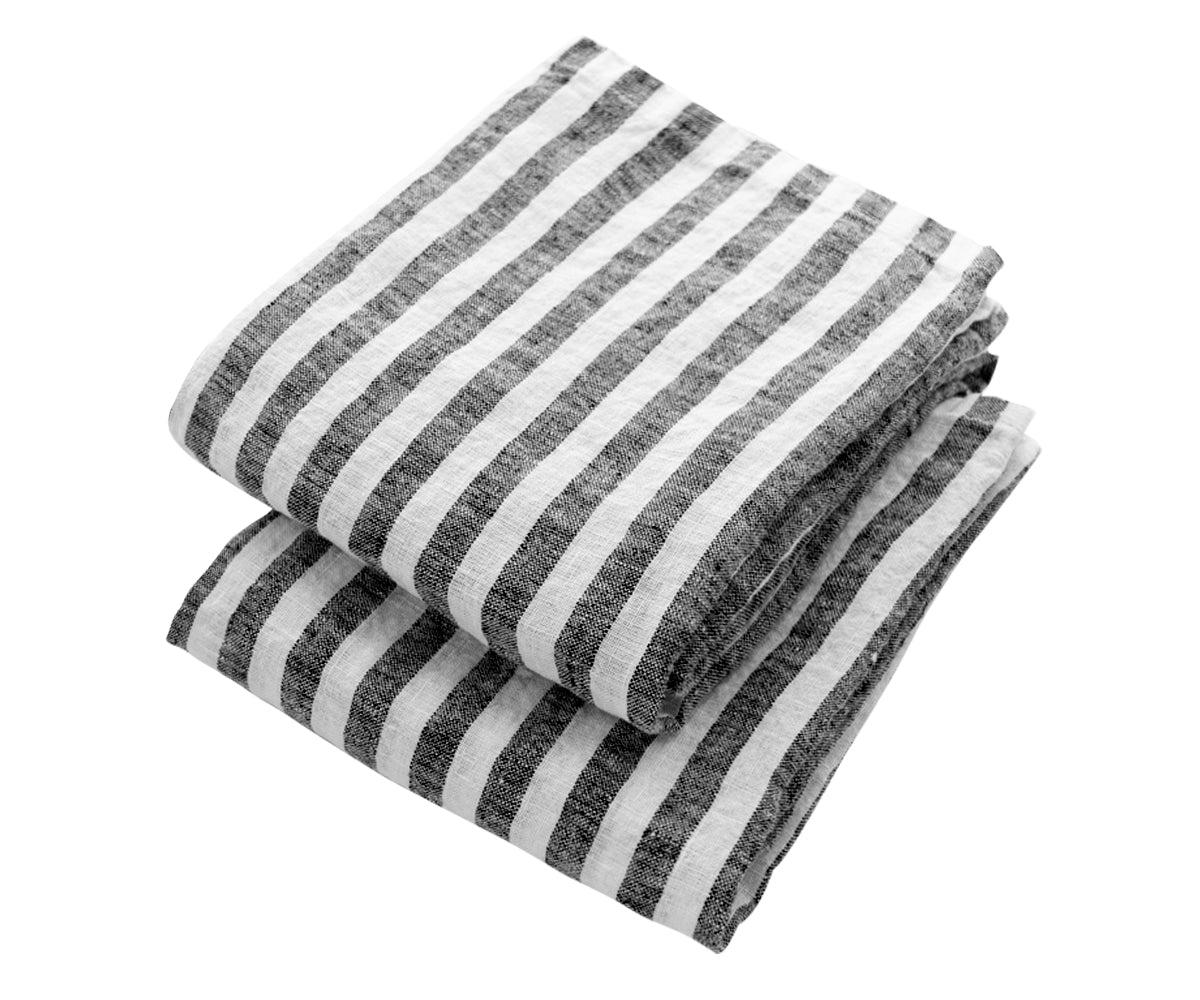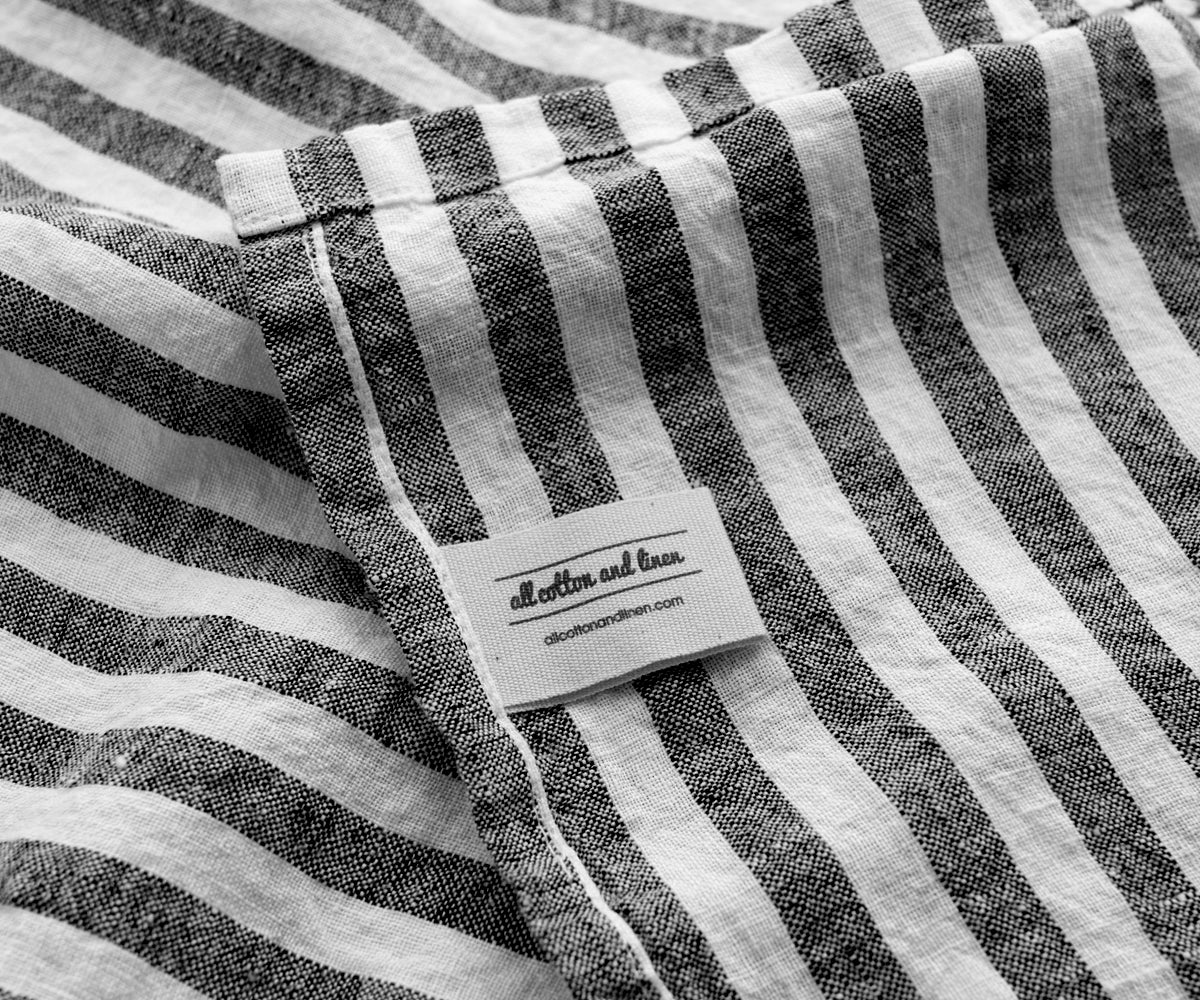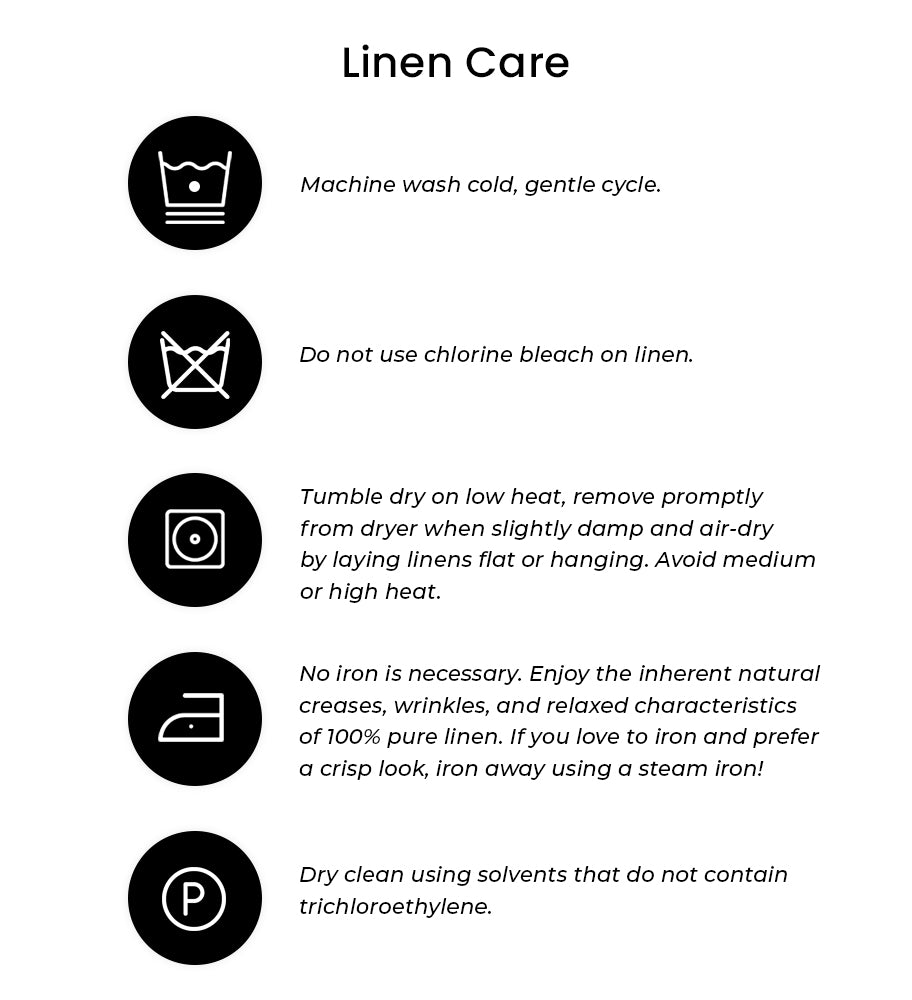The Science Behind the Yellowing of Cotton and Linen
Both cotton and linen are plant-based natural fibers cotton from the cotton plant and linen from the flax plant. While they are durable and breathable, they’re also sensitive to environmental factors like air, light, and storage conditions. Understanding the science behind this transformation can help you protect your fabrics better.
1. Oxidation: The Natural Aging Process
Oxidation is one of the main reasons your cotton tablecloths and linen napkins turn yellow over time. When oxygen molecules in the air interact with the fabric fibers, a slow chemical reaction takes place similar to how metal rusts or apples brown when exposed to air. This gentle aging process causes a yellowish tint, especially in white fabrics.
2. Light Exposure: Fading and Discoloration
Sunlight is another major culprit. Just like how our skin tans, fabrics can discolor when left in direct sunlight for too long. White cotton dish towels and linen kitchen towels are particularly vulnerable, as UV rays break down natural fibers and alter their color.
3. Improper Storage: A Hidden Threat
Where and how you store your fabrics can significantly affect their longevity. Storing cotton napkins or linen tablecloths in bright, humid, or unventilated spaces can accelerate yellowing. Avoid plastic containers or airtight boxes that trap moisture. A cool, dry place is always best.
How to Prevent Cotton and Linen from Yellowing
Here are a few practical ways to preserve the freshness of your cotton and linen fabrics:
-
Proper Storage: Keep fabrics in cool, dark, and dry areas away from direct sunlight.
-
Air Circulation: Store linens in breathable cotton bags to prevent trapped moisture.
-
Use Acid-Free Tissue Paper: Wrap delicate items like embroidered napkins in acid-free paper to slow oxidation.
-
Avoid Harsh Detergents: Use gentle, eco-friendly detergents when washing linen kitchen towels or cotton tablecloths.
-
Gentle Wash Cycles: Wash in lukewarm water using mild detergent, and always air dry when possible.
-
Rotate Regularly: Using your linens often helps prevent discoloration caused by prolonged storage.
Top-Rated Cotton Tablecloths for Everyday Use
Top-rated cotton tablecloths make daily dining simple, neat, and comfortable. Their soft feel, steady drape, and durable weave help the table look fresh through busy breakfasts, quick lunches, and relaxed dinners.
Many everyday designs feature calm colors and light patterns that suit any home style without overpowering the space.
Cotton also handles frequent washing well, keeping the tablecloth looking crisp after every use. This makes it a practical, reliable pick for homes that want both style and easy upkeep.
Takeaway
Yellowing is a natural part of your cotton and linen’s life cycle, but it doesn’t mean their charm has faded. With mindful care, proper storage, and gentle washing, you can keep your linens looking as fresh and elegant as the day you bought them.
At All Cotton and Linen, we bring you high-quality cotton napkins, linen tablecloths, kitchen towels, and other sustainable essentials designed to last beautifully through the years. Treat your home to fabrics that stay naturally bright, soft, and timeless.































